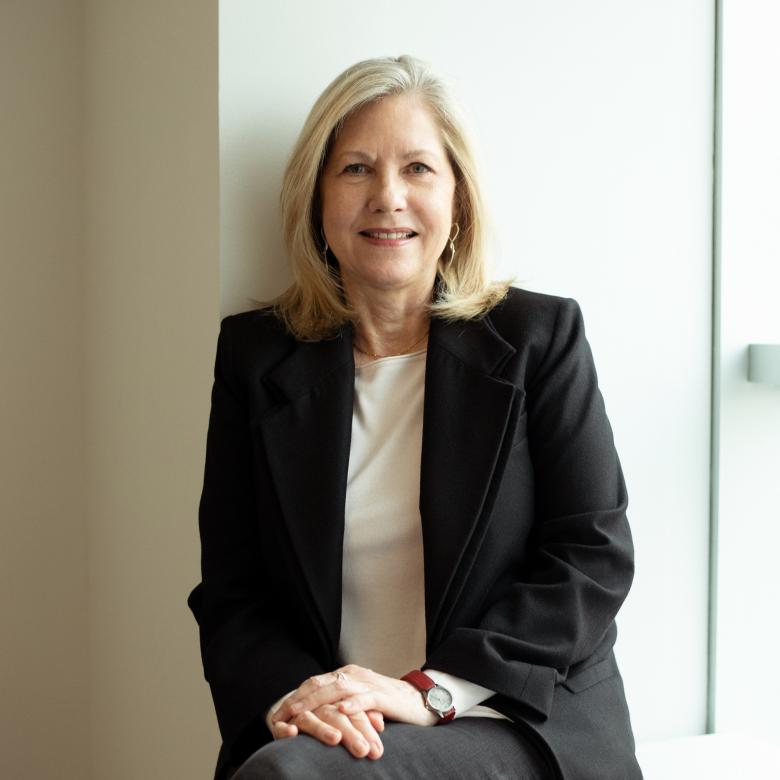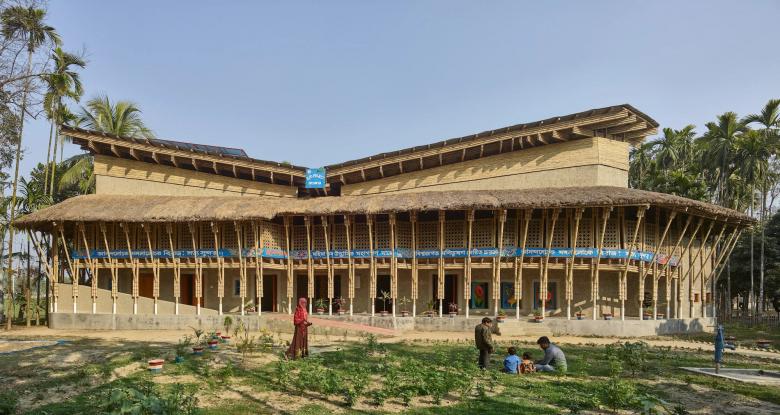15. June 2023
Photo of Martha Thorne by C. de Lucas
Madeline Beach Carey spoke with Martha Thorne recently in Barcelona. Their initial chat about cities continued by email with a discussion of education and architecture and some very interesting new opportunities for universities and teaching professionals, including a grant of up to €75,000 for teaching during a period of one academic year.
Madeline Beach Carey (MBC): You’ve been involved with architecture and education — educating architects — for much of your career. What major challenges do you see schools of architecture facing at the moment? And what do you imagine their greatest challenges might be in twenty years?
Martha Thorne (MT): We see evidence of new ways of teaching and learning, especially obvious since having to respond to the Covid pandemic. It forced us to think in news ways and use different tools. In addition to the questioning of old pedagogies, the field of architecture has many new pressures from the rapid changes in technologies to the pressures of dealing with the climate crisis, and the emphasis on finding new materials or making our environments healthier. We have expanded the responsibilities of the profession and are now grappling with how to effectively do this.
MBC: The Obel Award Teaching Fellowships aim to bring the professional and academic realms together. This fellowship, with three awards designated for the inaugural cycle — one each in Latin America, South and Southeast Asia, and Africa — is quite extraordinary in its geographic scope. Why is the Obel Foundation investing in these three areas?
MT: The Henrik F. Obel Foundation seeks through all its initiatives to make a difference and effect change. Therefore, it believes that regions that are distant from Denmark and those that reflect countries undergoing development could benefit from the funding opportunity for new educational proposals. Additionally, the Obel Award is better known in Europe and the United States than in other parts of the world. We would like to expand our knowledge of the work going on in these parts of the world. Therefore, by offering fellowships there, we hope to form collaborative relationships with institutions and professionals and strengthen our understanding of these regions and their architecture. Ultimately, one of our goals is to connect people and share best practices for architecture and the built environment.
The inaugural Obel Award, in 2019, was given to Junya Ishigami's Water Garden. (Photo courtesy of Nikissimo Inc.)
MBC: This fellowship makes it easier for universities to work with what we might call “non-traditional teachers.” Perhaps an artist or even a poet or dancer interested in architecture could lecture about public space or new trends in urban planning. Could you tell us a bit about that kind of interdisciplinary possibility? Do you see this as something architecture education needs to do more of? Looking into / within/ around / with other creative disciplines? Are there any specific examples of such “experiments” you could share?
MT: It seems that the pendulum swings back and forth between extreme specialization and generalist education. I like to think that there is a third path, which is recognizing the complexities of our world and our environments — natural, built, and digital — and using a transdisciplinary approach that would give us a better approach and more tools to create architecture that is relevant, responsive, and beautiful. If we consult academic articles, today there are many more discussing the methods and values of transdisciplinary education. Architecture education is uniquely poised to expand cross-disciplinary thinking. Creating proposals and projects in group settings and dealing with complex briefs is the norm in most architecture schools.
So, it seems that providing opportunities to speak with other professions and disciplines (including economics, sociology, demography, sustainability, health, art, and many others) and finding common ground would be both enriching and a chance to expand our thinking. As an example, a master-level course at IE School of Architecture and Design made available sessions with experts in the fields of sustainability, engineering, politics, business, and communication to students working on their thesis projects. I also know of one important strategic design company that hired a person trained in ballet dancing because she could help others think "outside the box" and relate their proposals to peoples' physical experiences uniquely and profoundly. Architects do not have to be experts at everything, but they must know the language of other disciplines to “ask the right questions.”
Anna Heringer's Anandaloy Building in Bangladesh won the Obel Award in 2020. (Photo © Kurt Hoerbst)
MBC: Could you expand on the themes of this year’s Fellowship (“Well-being through architecture” and “Seminal solutions to the challenges facing cities”)? Why are these themes so important to architects studying today?
MT: The first edition of the Teaching Fellowships uses two different themes related to past Obel Awards. We selected these two, which reflect different scales — from a building or space to the city — to give flexibility to applicants. Additionally, developing regions are grappling with making livable cities that can provide healthy environments for all their residents. And of course, we hope that academic institutions undertake significant efforts for teaching and research to become leaders of the conversations around these issues.
MBC: How does the jury choose the best applications? Could you give us the “inside scoop” on how the final decision is made?
MT: The board of the Henrik F. Obel Foundation, along with a few select academics, will be looking for proposals of impact. This means that the subject proposed can expand and contribute to the subjects already being imparted at the academic institution, that the focus is based on the reality of the context by seeking to understand the present and improve the future, and that there may be long-lasting benefits of the course. The ongoing benefits could be in terms of pedagogical methods to be used in other courses in the future, an increased connection and dialogue with the community outside the university, or even the possibility to connect the fellow and university to other academic institutions to share and create knowledge. You can see that this is not a question of ticking boxes or looking for famous names; rather it is a step-by-step attempt to deepen our knowledge and encourage us all to take action in favor of architecture, health, and the city.
Martha Thorne is a Distinguished Professor at IE University. She served as Dean of the IE School of Architecture and Design from 2015–2022. Currently, she is Senior Advisor to the Henrik F. Obel Foundation. From 2005 to 2021, she was the Executive Director of the Pritzker Architecture Prize, popularly known as the “Nobel Prize for Architecture.”
Applications for the Obel Award Teaching Fellowships are due August 1, 2023. Visit the Obel Award website for details.


